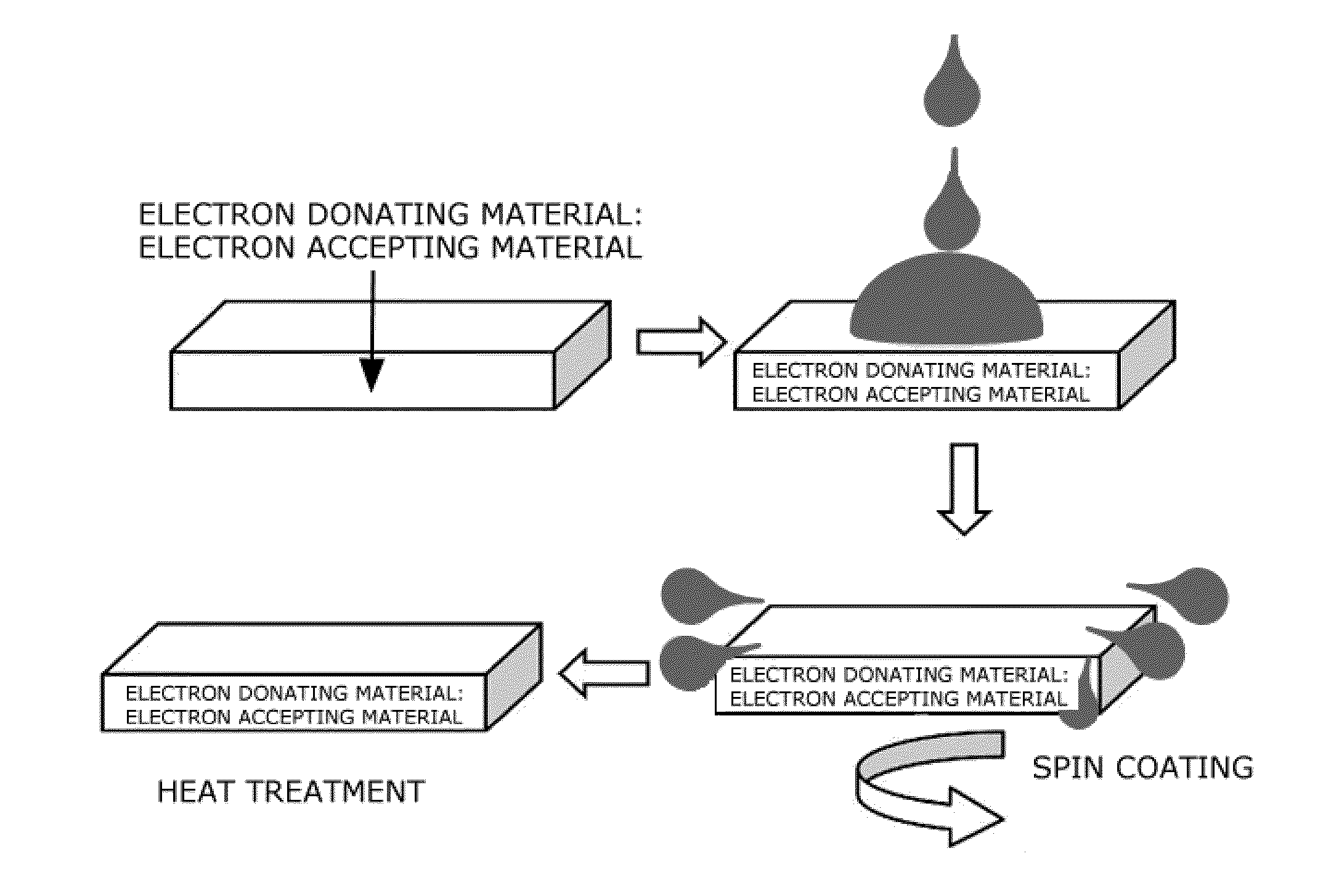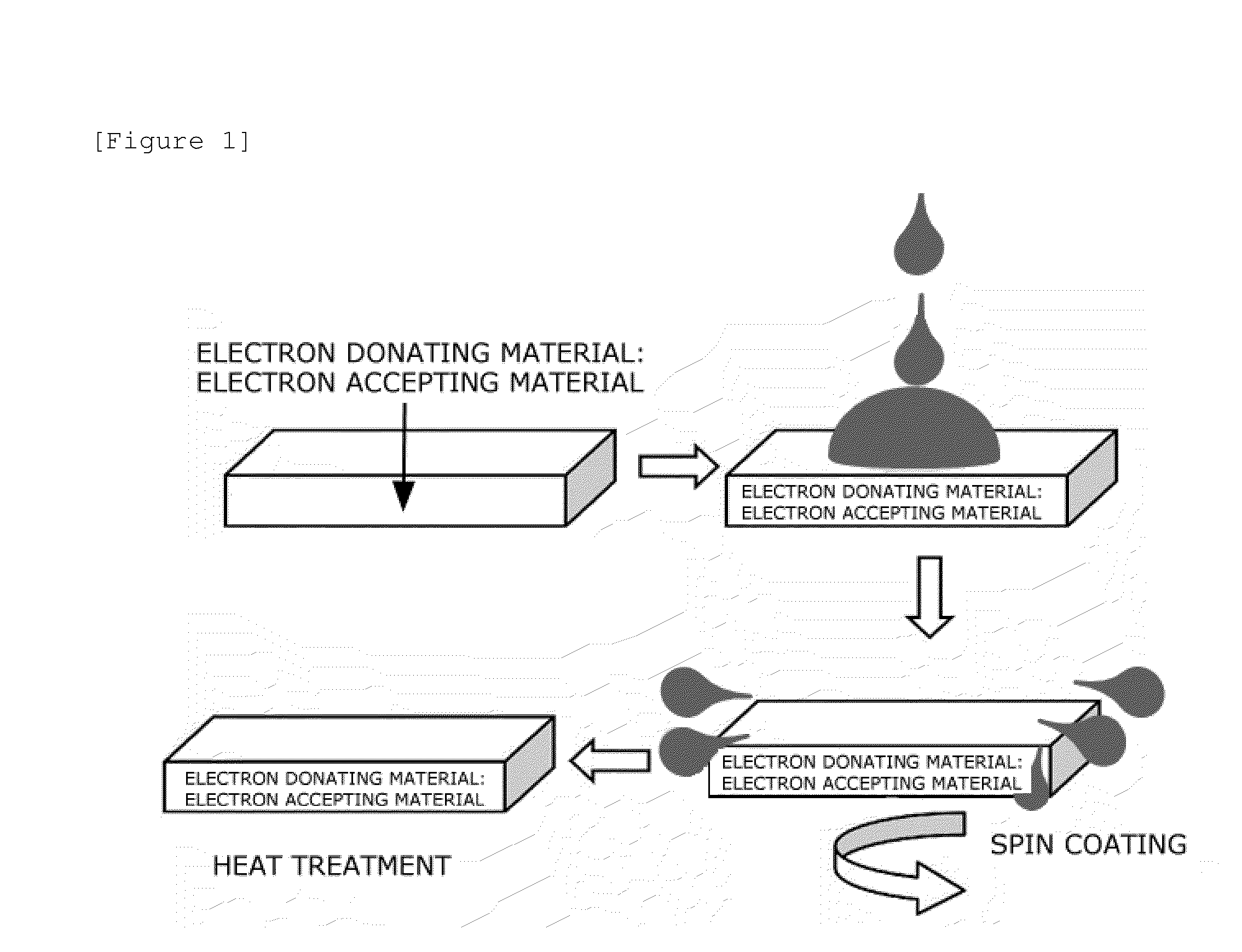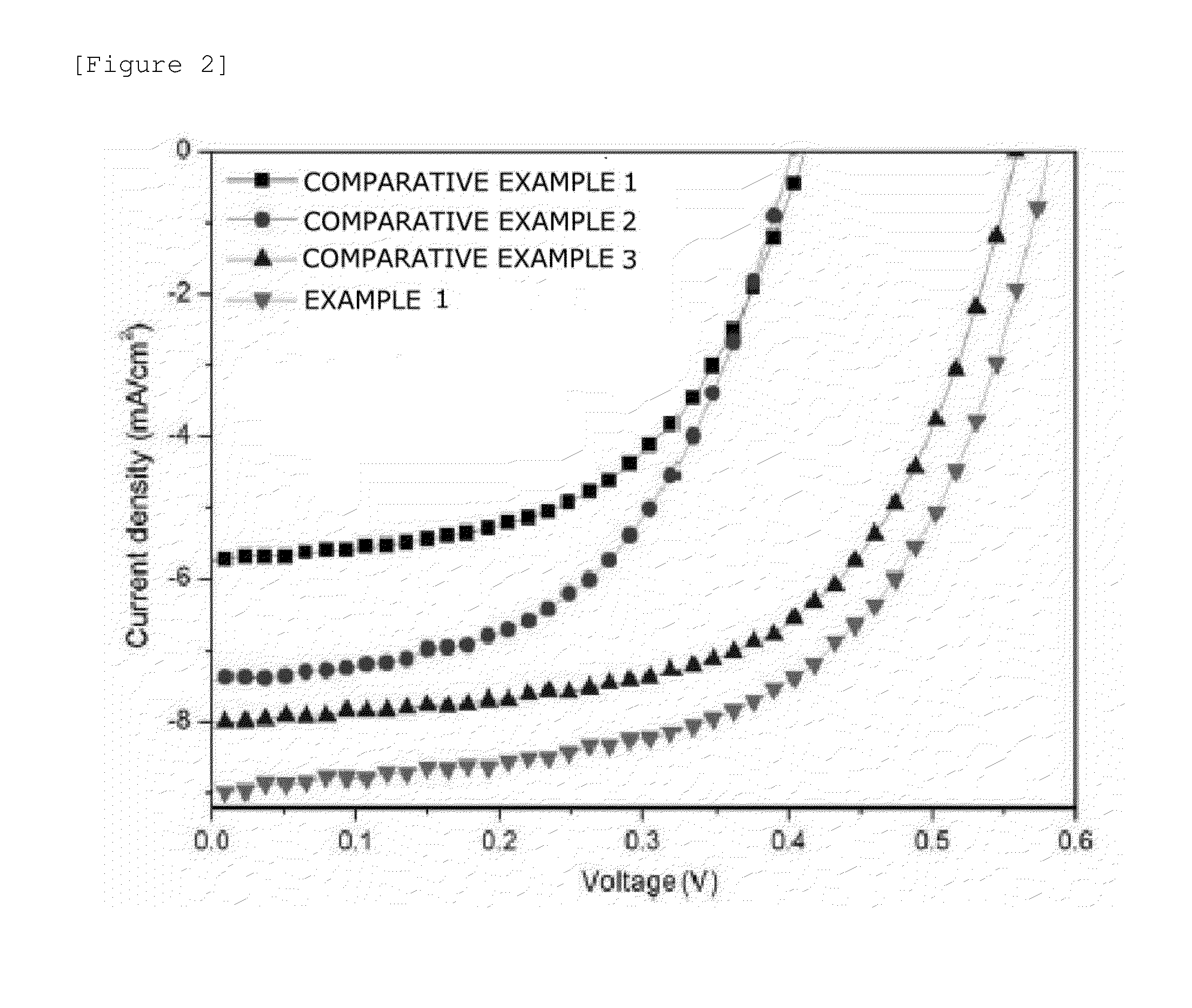Active layer, organic photovoltaic cell comprising the same and manufacturing method thereof
- Summary
- Abstract
- Description
- Claims
- Application Information
AI Technical Summary
Benefits of technology
Problems solved by technology
Method used
Image
Examples
example 1
Manufacturing of the Organic Photovoltaic Cell that was Subjected to the Non-Solvent Swelling Method And the Heat Treatment
[0256]The organic photovoltaic cell had the structure of ITO / PEDOT:PSS / photoactive layer (P3HT:PCBM) / Al. The glass substrate on which the ITO was applied was washed by an ultrasonic wave by using distilled water, acetone, or 2-propanol, the ITO surface was treated by ozone for 10 min, spin coating was performed by using PEDOT:PSS (Clavios P) in a thickness of 40 nm, and heat treatment was performed at 200° C. for 5 min. The mixture of P3HT:PCBM mixed at a ratio of 1:0.6 is formed for coating of the photoactive layer, and the spin coating was performed in a thickness of 220 nm to form the photoactive layer. 80 μl of acetonitrile was applied at an interval of 10 min on the photoactive layer, and subjected to the spin coating at 5000 rpm and the non-solvent swelling method. Al was deposited in a thickness of 150 nm by using the thermal evaporator under the vacuum o...
example 2
Manufacturing of the Organic Photovoltaic Cell that was Subjected to the Non-Solvent Surface Treating Method
[0264]The organic photovoltaic cell had the structure of ITO / PEDOT:PSS / photoactive layer (the following polymer 1:PCBM) / Al. The glass substrate on which the ITO was applied was washed by an ultrasonic wave by using distilled water, acetone, 2-propanol, the ITO surface was treated by ozone for 10 min, then spin coating was performed by using PEDOT:PSS (Clavios AI4083) in a thickness of 26 nm, and heat treatment was performed at 200° C. for 5 min. The mixture of the following polymer 1:PCBM mixed at a ratio of 1:1.75 is formed for coating of a photoactive layer, and the spin coating was performed in a thickness of 100 nm to form a photoactive layer. Methanol was applied on the photoactive layer, and subjected to the spin coating for the non-solvent surface treating method to remove the non-solvent at 5000 rpm. Al was deposited in a thickness of 150 nm by using a thermal evaporat...
example 3
Manufacturing of the Organic Photovoltaic Cell that was Subjected to the Non-Solvent Surface Treating Method
[0265]The same procedure as Example 2 was performed, except that the 2-methoxyethanol was used instead of Methanol.
PUM
| Property | Measurement | Unit |
|---|---|---|
| Fraction | aaaaa | aaaaa |
| Fraction | aaaaa | aaaaa |
| Fraction | aaaaa | aaaaa |
Abstract
Description
Claims
Application Information
 Login to View More
Login to View More - R&D
- Intellectual Property
- Life Sciences
- Materials
- Tech Scout
- Unparalleled Data Quality
- Higher Quality Content
- 60% Fewer Hallucinations
Browse by: Latest US Patents, China's latest patents, Technical Efficacy Thesaurus, Application Domain, Technology Topic, Popular Technical Reports.
© 2025 PatSnap. All rights reserved.Legal|Privacy policy|Modern Slavery Act Transparency Statement|Sitemap|About US| Contact US: help@patsnap.com



